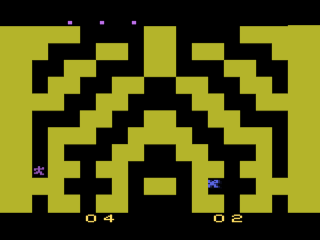|
|
Entombed
|
Name:
|
Entombed |
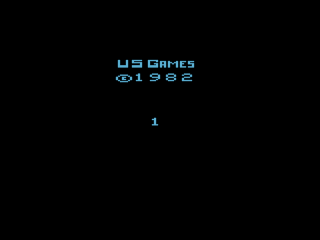 |
| Company: | U.S. Games |
|
|
Model #:
|
VC2007 | |
|
Programmers:
|
Western Technologies Maze Algorithm: Duncan Muirhead & Paul Allen Newell (Programmers) Entombed: Steve Sidley (Programmer), & Tom Sloper (Designer) |
|
| Year: | 1982 | |
|
Released?
|
Yes
|
|
|
Notes:
|
Originally called
Maze Chase then Zoomie Zombie |
One of the more overlooked titles in the Atari 2600 library,
Entombed is an interesting little maze game with a simple
concept: Don't get trapped (entombed if you will) in the
scrolling maze. With its muted graphics and simplistic
gameplay, Entombed didn't make much of a splash upon its release
in late 1982 and was quickly forgotten (being one of U.S. Games
last releases didn't help). This is a shame because as
simple an Entombed looks, it can really be a lot of fun.
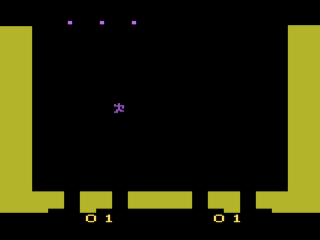
Entombed started out life as an experiment by Duncan Muirhead
and Paul Allen Newell to develop a random maze generating
algorithm for the 2600 to help with creating procedural floor
plans for Paul's Towering Inferno game. One day after work
they decided to see if they could create a endless maze generating
algorithm that always had a exit. Over a few beers they came
up with an elegant yet deviously complex algorithm that mostly
accomplished their goal. The code also allowed for changing
the difficultly of the maze on the fly and an asymmetrical maze,
but sometimes created mazes that were unsolvable or too
simple. Happy with their new algorithm's potential, Paul
showed the code to his management who wanted to turn it into a
game. The problem with this was that the code took up most
of the free processing time of the 2600 and there really wasn't
much room for adding actual gameplay elements. Still,
management insisted that it be turned it into a game one way or
another. Paul continued to tinker with his maze game but was
pulled off to do higher priority projects such as Towering Inferno
and Scramble for the Vectrex. Paul planned on eventually
finishing the Maze game, but left Western Technologies before this
could happen.
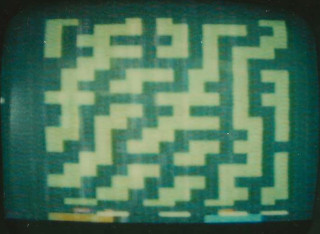
The original maze algorithm (note the asymmetrical maze)
After Paul left, he continued to work with Western Technologies as a contractor. After finishing up Towering Inferno (in which he used some of Maze code for room and layouts and flame placement), he was directed by WT management to create a stripped down version of his Maze game (only keeping the maze generating algorithm) to turn over to programmer Steve Sidley. Steve was then tasked with turning what he described as "A basic maze generating routine having been partially written by a stoner... when he was drunk and whacked out of his brain" (a bit of an exaggeration) into a workable game. Steve took the simplified maze generating algorithm (called MINOTR7 at this point) and set out to make it into an actual game.
So what did Steve add to make Entombed into a proper game? The first thing Steve added was an enemy (in the form of zombies) that the player would occasionally encounter in the maze. There are two different types of zombies in Entombed: Blue and Orange. Blue zombies can only move through open passages like the player can, but orange zombies can move through walls. Steve also added the 'Make-Break'. Make-Breaks are tools that allow to player to either make a wall (to block blue zombies) or break a wall (when you're trapped in a dead end). The player starts with one Make-Break but can pick up more in the maze. The idea for the Make-Break actually dates back to Paul's unreleased Maze game, but in that version the player always had the power instead of having a limited number of uses. If the player is touched by a zombie or scrolls off the top of the screen they will lose a life. In the one player mode the player scores one point for each section of maze they traverse through (there are five sections in each maze), but in the simultaneous two player variation there is no scoring and each player simply tries to outlast the other. Steve also updated the player graphic and added some fixes to the maze generation algorithm which were designed to prevent repeating patterns.
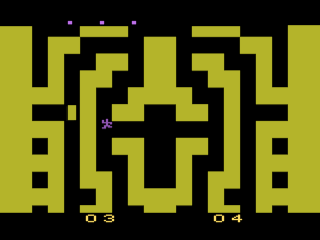
While Entombed may have been forgotten for the last few decades, the game was recently thrust back into the spotlight when two university researchers (John Aycock and Tara Copplestone) decided to take a closer look at the maze generating algorithm and write a research paper based on their findings. This sparked a bit of renewed interest in the game and in researching old game algorithms in general including the New Yorker Radio Hour doing a podcast on Entombed and the drunk/stoner/whacked reference. While it may not be the most original game on the 2600 (Steve was somewhat hamstrung with what he could do with the existing code), Entombed is definitely worth a play or two. The two player variation the potential to be a fun retro themed party game.
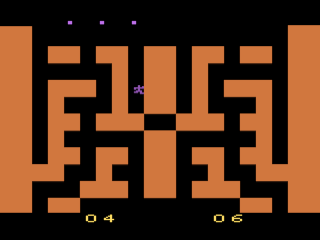
A quick note on the confusing names and dates of the prototypes listed below. Paul's original unreleased maze game was known by various names during development (Maze, Amaze, Minotaur, etc.) but the file names were always called MAZx where x was the version suffix. Paul then cloned MAZV and renamed it MINOTR to serve as a new development branch. Later Paul cloned MINOTR as Maze02jun82 which was to serve as another development branch to see if the timing patch developed for Towering Inferno could be used with the Maze code. However this branch was then folded back into the MINOTR branch with Maze22jun82 becoming MINOTR1. The MINOTR branch is what was eventually given to Steve Sidley and developed into Entombed.
To summarize:
-
MAZV is the final development version of the original Maze game that was created in late summer 1981 after which Paul was told to stop working on Maze and focus on Towering Inferno.
-
MINOTR is a clone of MAZV created on October 1981. This was a fully documented version of Maze which was to serve as a basis for an actual game which was then shelved when the team was pulled off the 2600 to work on the Vectrex.
-
Maze02jun82 was cloned from MINOTR in June of 1982 as a new development branch to see if some timing fixes that Dave Hampton had added to Towering Inferno could be used for Minotaur.
-
Maze22jun82 is the patched version of Maze02jun82. This file was eventually renamed MINOTR1 to differentiate it from the original Maze prototypes and served as the starting point for stripping out the game code from the maze algorithm (MINOTR2 through MINOTR7).
-
MINOTR7 is the final version in the Minotaur series which only consists of the maze algorithm. This was the version that was given to Steve Sidley to develop Entombed.
-
Zombie Final and Zmbi28oct82 are WIP versions of Entombed created by Steve Sidley.
For more information on Maze and the development of Entombed, please check out Still Entombed After All These Years: The continuing twists and turns of a maze game by Paul Allen Newell, John Aycock, and Katie M. Biittner. They have done extensive research on the subject and many of the findings on this page were pulled directly from their amazing article.
Polaroid of the original
maze generating algorithm in action. The 'Forbidden'
meant that Paul was not supposed to work on it until Towering
Inferno was finished.
| Version | Cart Text | Description |
| ?/??/81 |
MAZV / MINOTR / Maze02jun82 |
Original Maze game with 42 variations |
| 6/22/82 | MINOTR1 / Maze22jun82 |
Timing update to MINOTR |
| 8/20/82 | MINOTR7 | Stripped down maze generation demo used for Entombed |
| 10/22/82 | Zombie Final | Late WIP version of Entombed |
| 10/28/82 | Zmbi28oct82 |
Late WIP version of Entombed |

